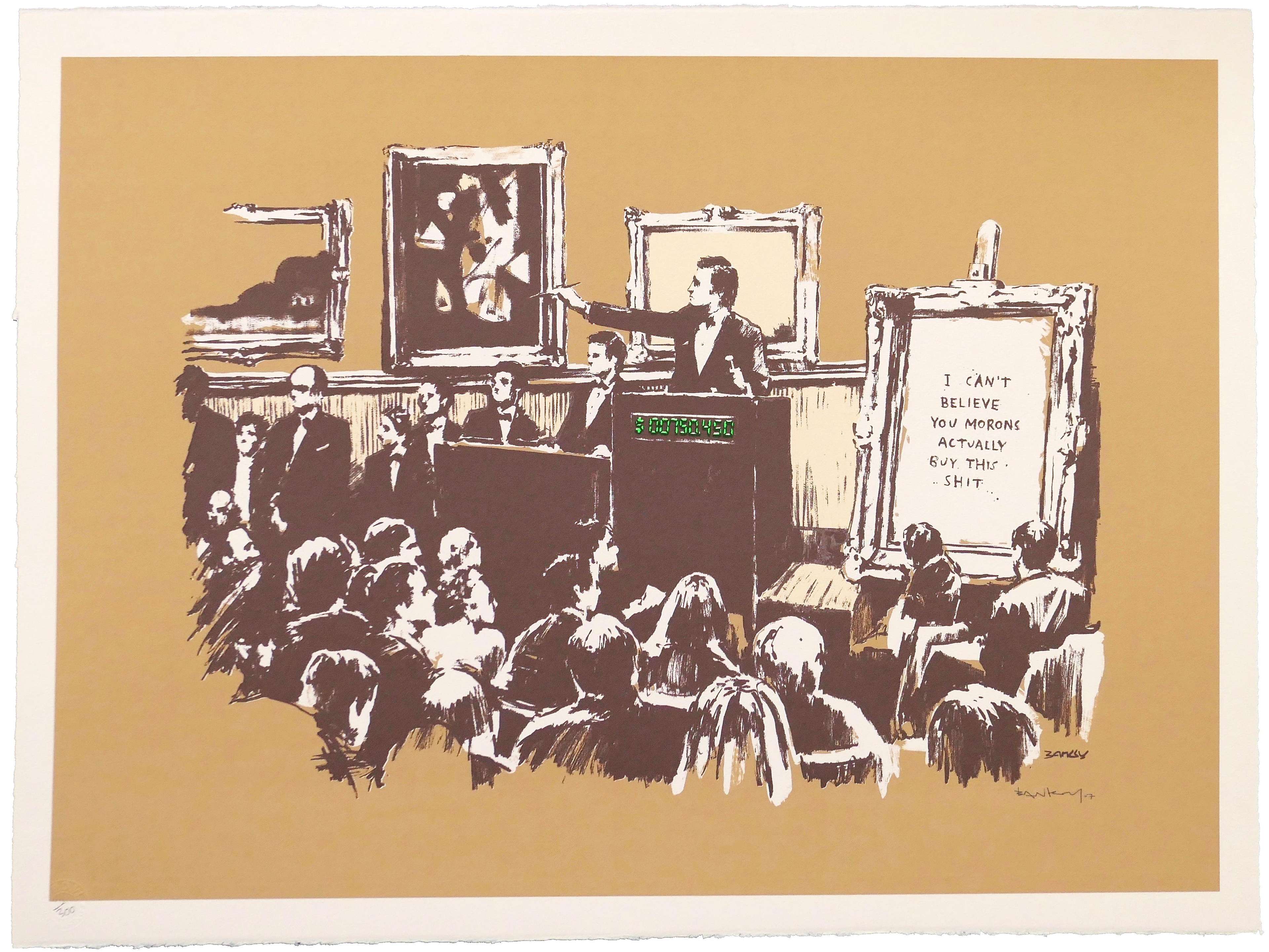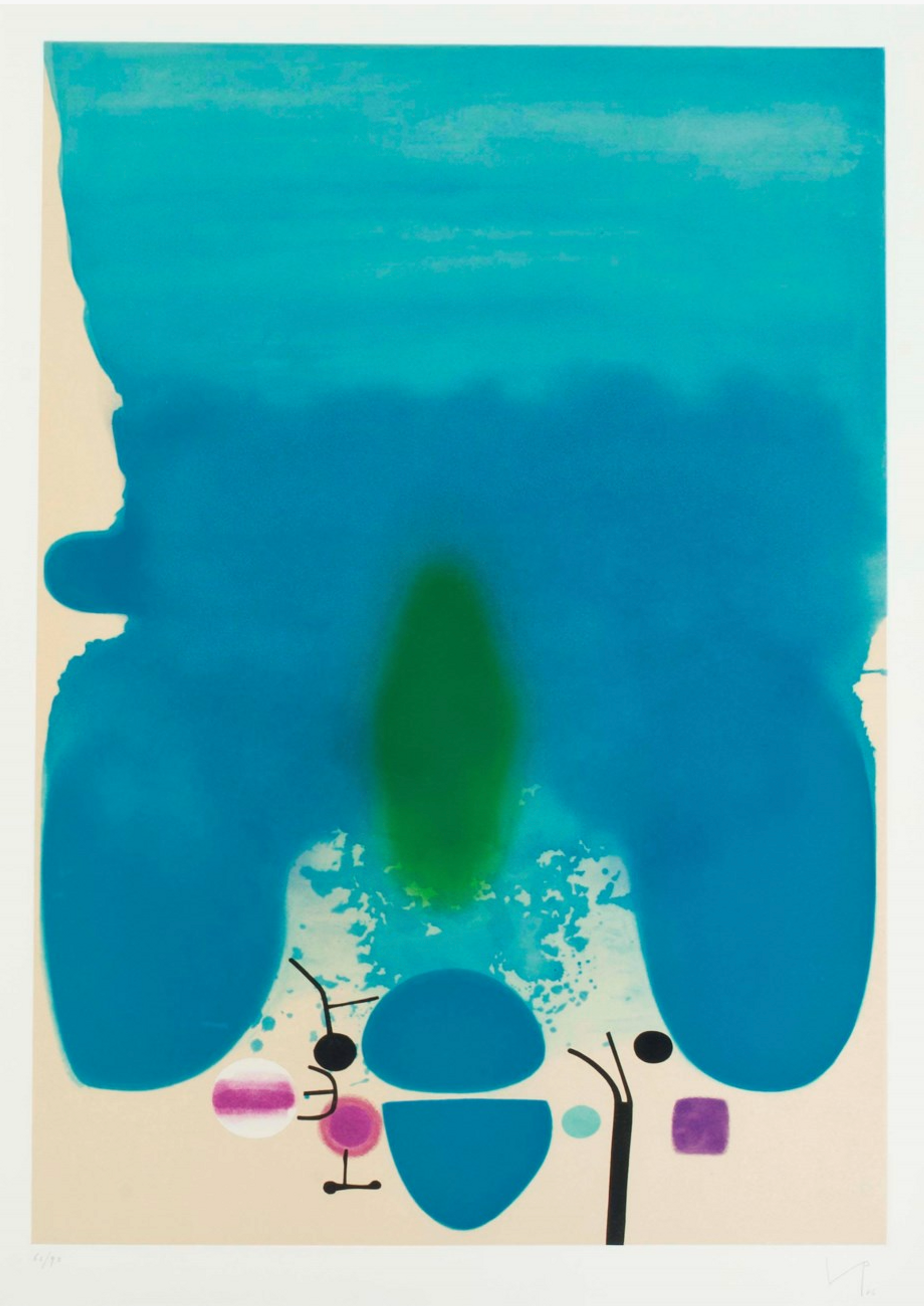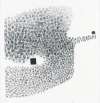 Image © Christie's / Soft is the Sound of the Ocean © Victor Pasmore 1986
Image © Christie's / Soft is the Sound of the Ocean © Victor Pasmore 1986Get a valuation
Victor Pasmore, one of the most infamous British artists, played a significant role in the development of Abstract Art in the United Kingdom. He was born in 1908 in Surrey, England, and begun his career as a painter in the 1920s. Pasmore's early work was figurative and influenced by the Euston Road School of Art. And his style matured, he gradually gravitated towards abstraction, inspired by artists such as Paul Klee and Piet Mondrian.
 Image © Tate / Interior With Reclining Women © estate of Victor Pasmore, 1944-46
Image © Tate / Interior With Reclining Women © estate of Victor Pasmore, 1944-46Who Was Victor Pasmore?
In the 1950s, Victor Pasmore became a leading figure in the British abstract art movement, along with other respected British artists including Ben Nicholson and Barbara Hepworth. He was a founding member of the influential art group, the Constructionists, and his work was featured in the 1956 This Is Tomorrow exhibition at the Whitechapel Gallery in London, which is considered a landmark event in the development of British pop art.
Pasmore's later work focused on geometric abstraction, and he is known for his use of colour and form to create visually engaging compositions. He continued to produce work until his death in 1998, and his contribution to the development of abstract art in the United Kingdom is still celebrated today.
If you own a piece of Pasmore’s legacy and are looking to sell, we have put together this comprehensive guide to start you on the right track.
 Image © Tate / Linear Development A © Victor Pasmore, 1970
Image © Tate / Linear Development A © Victor Pasmore, 1970How Much Do Victor Pasmore Prints Sell For?
The price of Victor Pasmore prints varies depending on several factors including rarity, condition, and the edition size of the work. Prices for Pasmore prints tend to sell within the thousands.
Pasmore’s highest performing print titled Stromboli (1980) sold for £7,000 (hammer) at Roseberys in March 2021. The hammer price outperformed a modest preset estimate of £2,000 3.5-times. The high selling price attests to the evolution of Pasmore’s artistic oeuvre demonstrated within the work as it showcases his exploration of abstracted spatial relations and colour interactions.
Considering the fickle nature of the art market, these prices are of course subject to change and vary based on the specific print and auction house or gallery selling it. Additionally, the condition and authenticity of the print can significantly affect its value. It’s always advised to work with a trusted art gallery or an art broker, like MyArtBroker,to assist in selling for the right price at the right time.
 Image © Tate / Lamplight © Victor Pasmore, 1941
Image © Tate / Lamplight © Victor Pasmore, 1941How Do You Authenticate a Victor Pasmore Print?
It is important to ensure that all prints are authentic before offering them on the market. There are several steps that can be taken to authenticate a Victor Pasmore print. First, it is important to examine the print closely and look for any signs of wear and tear or damage. Additionally, its highly advisable to compare the print with other verified works by Pasmore to ensure that the style, composition, and materials are consistent with his other prints.
Working with an experienced art broker or art appraiser can also be helpful in authenticating Pasmore prints. They can utilise their expertise to verify the print's authenticity and provide an appraisal of its value. If you are looking for a specialist to authenticate your Pasmore print, contact MyArtBroker and we can manage this process for you.
Another important factor to consider when authenticating a Pasmore print is the provenance or history of ownership. It is important to research the print's history and any documentation that may exist, such as certificates of authenticity, bills of sale, or exhibition records.
Authenticating a Pasmore print is a critical step in ensuring its legitimacy and establishing its value within the art market. Take the time to carefully examine the print, work with experienced art professionals, and research its history, so that you can feel confident in presenting a genuine and valuable Pasmore work for sale and install confidence in maximising its value.
 Image © Tate / Linear Motif In Black And White © Victor Pasmore, 1960-61
Image © Tate / Linear Motif In Black And White © Victor Pasmore, 1960-61Has Your Victor Pasmore Print Been Kept In Good Condition?
The condition of the print plays a significant role in determining its value in the art market. To assess the condition of your Victor Pasmore print, start by examining it closely for any signs of damage or wear. This includes looking for tears, creases, water damage, or discoloration. If you find any of these issues, it is important to address them immediately to prevent further damage. If your print has been framed, you should examine the frame for any signs of damage or wear, as this can also affect the condition of the artwork.
 Image © Tate / Abstract in White, Grey and Ochre © Victor Pasmore, 1949
Image © Tate / Abstract in White, Grey and Ochre © Victor Pasmore, 1949When Is the Best Time to Sell My Victor Pasmore Print?
The best time to sell your Victor Pasmore print depends on various factors, such as market demand, availability of similar prints, and current market trends. It's important to keep an eye on the art market. With tools available, like MyArtBroker's MyPortfolio, you can track the demand for your artwork in real time, and decide the best time to sell your print. Alternatively, you can seek the advice of a professional art broker or appraiser to determine the best time to make the sale.
However, there are a few general factors to consider when deciding to sell your Pasmore print. Firstly, if the print has increased significantly in value since you purchased it, it may be a good time to sell to realise a healthy return. Conversely, if you notice a decline in the print's value or market demand, it may be best to hold onto the work until the market improves. Assessing the market fluctuations surrounding an artist can be challenging, but MyArtBroker’s MyPortfolio platform offers a valuable and complementary solution to address this.
Arguably, a greater factor to consider when deciding to consign a Pasmore print is your personal financial status. If you need to free up some capital or are looking to invest in a different type of art, it may be a good time to sell your Pasmore print.
Overall, the best time to sell your Pasmore print is when you feel confident that you can obtain a fair price and that the timing aligns with your personal and financial goals.
 Image © Tate / Square Motif, Blue And Gold: The Eclipse © Victor Pasmore, 1950
Image © Tate / Square Motif, Blue And Gold: The Eclipse © Victor Pasmore, 1950Where Can I Sell My Victor Pasmore Print?
The where and how of the sale are the last practical considerations when it comes to selling your Victor Pasmore print. MyArtBroker endorses private sales since we believe in the benefits of both buyers and sellers. However, it is best to conduct your own research and decide the best way forward. The three primary avenues are through a private sale, an internet marketplace, or an auction house. Choosing the best venue to sell a piece will rely on your level of confidence and competence in the art market; nevertheless, while auction houses and galleries frequently charge sellers a hefty commission, at MyArtBroker we operate on a 0% seller’s fee.
Selling A Victor Pasmore Via Auction House
Selling a Pasmore print via auction house can be an effective way to reach a large audience of potential buyers and achieve a healthy sale price. Auction houses have established networks and marketing strategies to promote the sale of artworks, including Pasmore prints. The competitive bidding process can also drive up the sale price and potentially result in a higher investment return for the seller.
However, selling through an auction house also comes with drawbacks. Auction houses typically charge a commission fee on the sale price, which can be significant. There is also the risk that the print may not sell at all, which can be disappointing for the seller. Additionally, the timing of the auction may not align with the seller's preferred timeline for selling the print. To learn more, we recommend reading our comprehensive guide to auction v private sales.
 Image © Tate / Linear Motif In Two Movements © Victor Pasmore, 1974
Image © Tate / Linear Motif In Two Movements © Victor Pasmore, 1974Selling A Victor Pasmore Via Broker
Selling a Victor Pasmore print through a broker can be an effective way to navigate the art market and ensure that you receive a fair price for your artwork. A broker has the experience and knowledge to understand the current market trends, the value of your print, and the right audience to target for a successful sale. They can also handle the logistics of the sale, including marketing and negotiating with potential buyers.
One of the primary benefits of using a broker is that they have a network of potential buyers and collectors who may be interested in your Pasmore print. This option offers the opportunity to sell your print more quickly and for a potentially higher price than if you were to sell it without assistance. Additionally, brokers can offer you professional advice on the sale process and help you to navigate any legal or financial issues that may arise.
However, there are also some drawbacks to selling through a broker. Broker’s typically charge a commission fee, which can vary depending on the broker and the price of the print being sold. Additionally, you may not have as much control over the sale process, and you may need to trust the broker to act in your best interests.
Selling A Victor Pasmore Via Online Marketplace
Selling a Victor Pasmore print via an online marketplace can have both benefits and drawbacks. One of the main advantages is that online marketplaces have a global reach, which means that a larger audience can potentially view and purchase your artwork. This can increase the chances of finding a buyer quickly, which is especially important if you need to sell the print in a timely manner.
Another benefit is that online marketplaces often have lower fees compared to traditional brick-and-mortar galleries, which can be helpful if you are looking to maximise your profits.
However, like the other avenues, there are challenges to selling a Pasmore print online as well. One of these is ensuring that the print is properly represented in the online listing. High-quality images and accurate descriptions are essential to attract potential buyers and prevent any misunderstandings or disputes. Furthermore, online marketplaces can be competitive, and it can be challenging to stand apart from other sellers. It is important to consider the time and effort required to create an effective listing and manage the sale. Read more about selling art online in our guide to prints.
 Image © Tate / The Cave Of Calypso II © Victor Pasmore, 1977
Image © Tate / The Cave Of Calypso II © Victor Pasmore, 1977Why Sell Your Victor Pasmore With MyArtBroker?
A Dedicated Broker
At MyArtBroker we connect you to your own personal expert broker from our team who will find you a buyer and walk you through the process without any cost to you. We will assist with verifying authenticity and conducting condition checks, provide guidance on reasonable sale prices and the best time to sell managing the negotiation process. Our brokers will always make sure they achieve the best pricing for you because we cherish your prints just as much as you do. Even better, selling with us is free!
Our Network
At MyArtBroker, we have a global network of private collectors, brokers, and galleries to help you discover the perfect buyer at the right price. We have over 15,000 collectors buying and selling art every day, and over 85,000+ monthly visitors to our site.
We market your artwork using our digital platform, eliminating the trouble of you having to interact with possible buyers or the pressure of an auction. Additionally, your artwork is always visible to the public, reaching your target audience while you attend to other matters.
If you're interested in selling a Victor Pasmore print, get in touch with us for a free consultation.
Read our cohesive report to navigate the art market as a seller: A Guide to Selling Prints in the Current Market.
 Image © Tate / Blue Development © Victor Pasmore, 1974
Image © Tate / Blue Development © Victor Pasmore, 1974Victor Pasmore Collection Management with MyPortfolio
If you're looking to sell your Victor Pasmore prints, working with MyArtBroker can provide a seamless and efficient experience. As a trusted online marketplace for art collectors, we offer a range of services to help you sell your Pasmore print quickly and for the best possible outcome.
One of the key benefits of working with MyArtBroker is the access you gain to our extensive network of buyers and collectors. Our Trading Floor feature enables you to showcase your Pasmore prints to a large and diverse audience, increasing your chances of making a sale.
Moreover, selling your Pasmore prints through MyArtBroker means you have access to our art portfolio management tool, MyPortfolio. This can be a particularly useful tool for collectors of this artist as it helps track market trends and the value of Pasmore's works over time. With our state of the art features, you can easily see where opportunities lie for selling your Pasmore prints and make informed decisions about when to sell.















